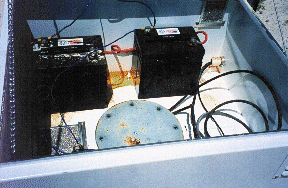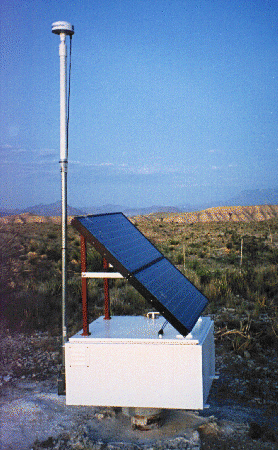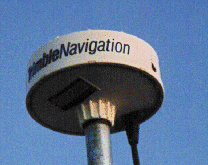

Each element includes:
The two 40-watt solar panels provide power to charge internal
lead-acid batteries. At Lajitas, the panels produce
sufficient power to run all the equipment within an
hour of sun rise. Within a short time later, there
is sufficient excess power to charge the batteries.
Field tests (done inadvertently when a cable was
disconnected), have demonstrated that the batteries
supply enough power to run the system continuously
for a week without any solar power and can recover
within a full day of sunshine.


Mounted above the antenna is a GPS receiver that provides precise world time and location. Location is appended to state-of-health information unambiguously identifying each data stream (this has proved particularly useful when coordination between the field activities and data recording is difficult). Tests of the system indicate that the sample synchronization and timing accuracy of the system is better than two microseconds from world time. Thus samples from two different elements are always within 4 microseconds of each other.
The rest of the
electronics at the site is within the borehole where
it is protected from daily temperature extremes and
is isolated from corrosive gases that may escape
from the batteries. The box itself is well vented.